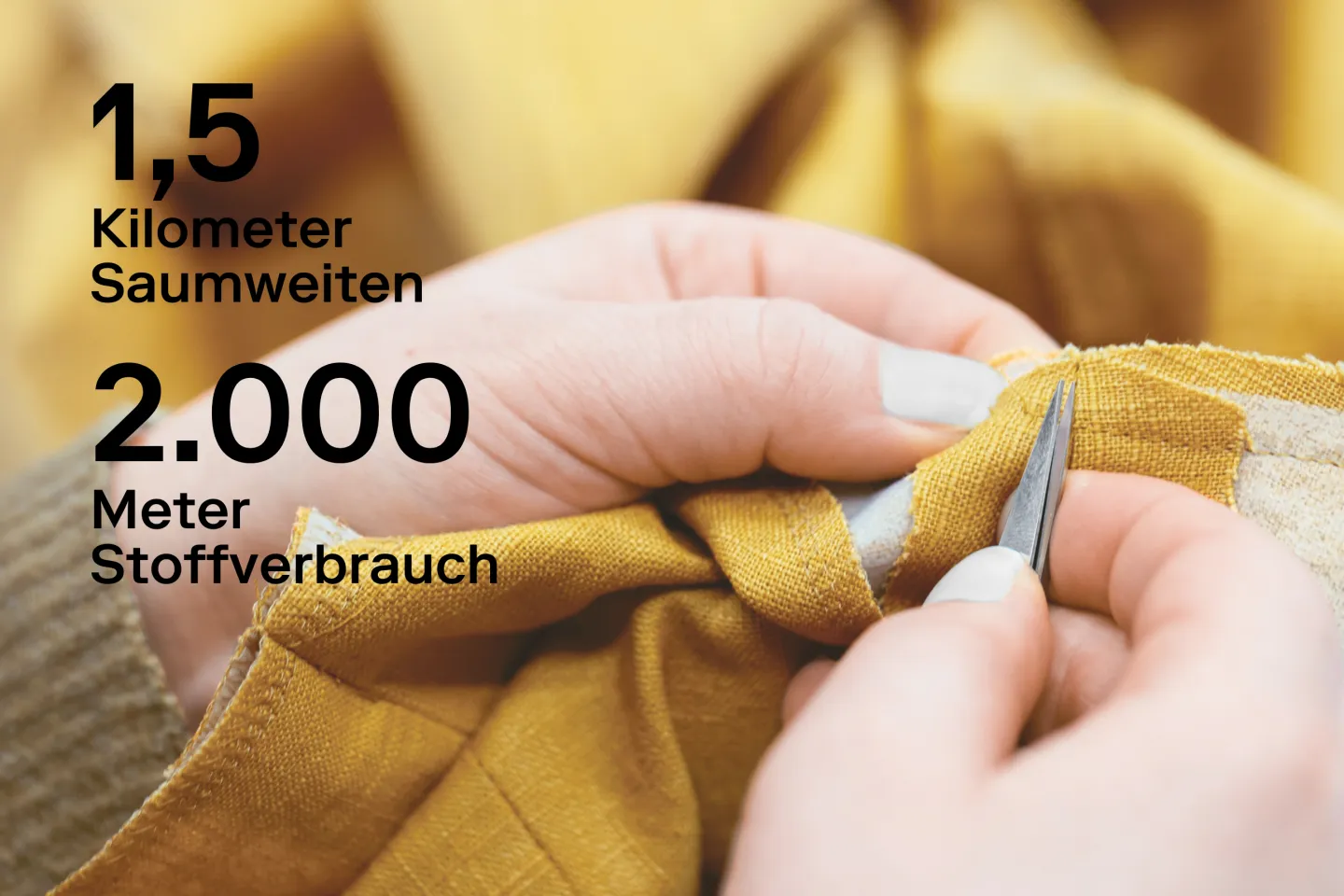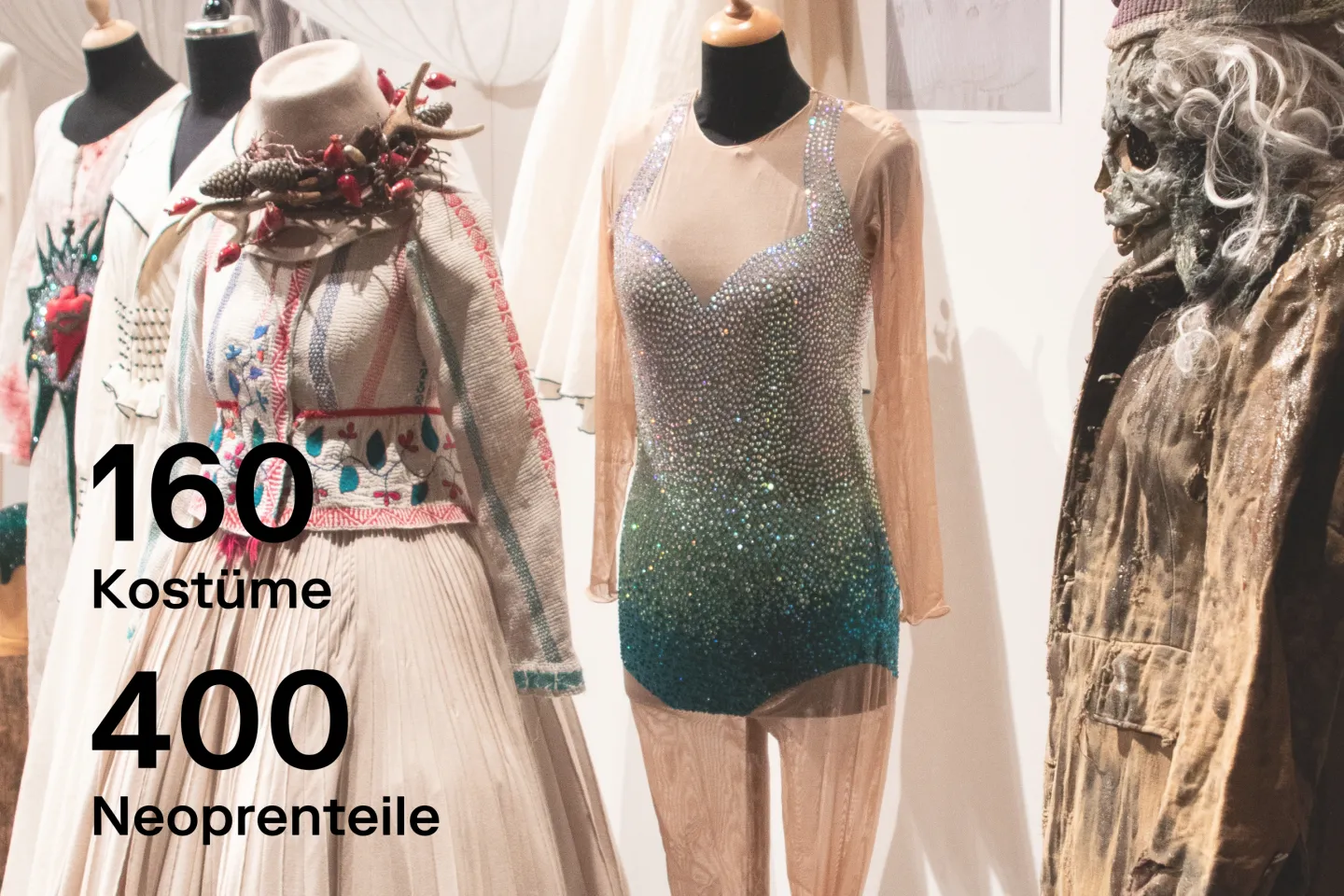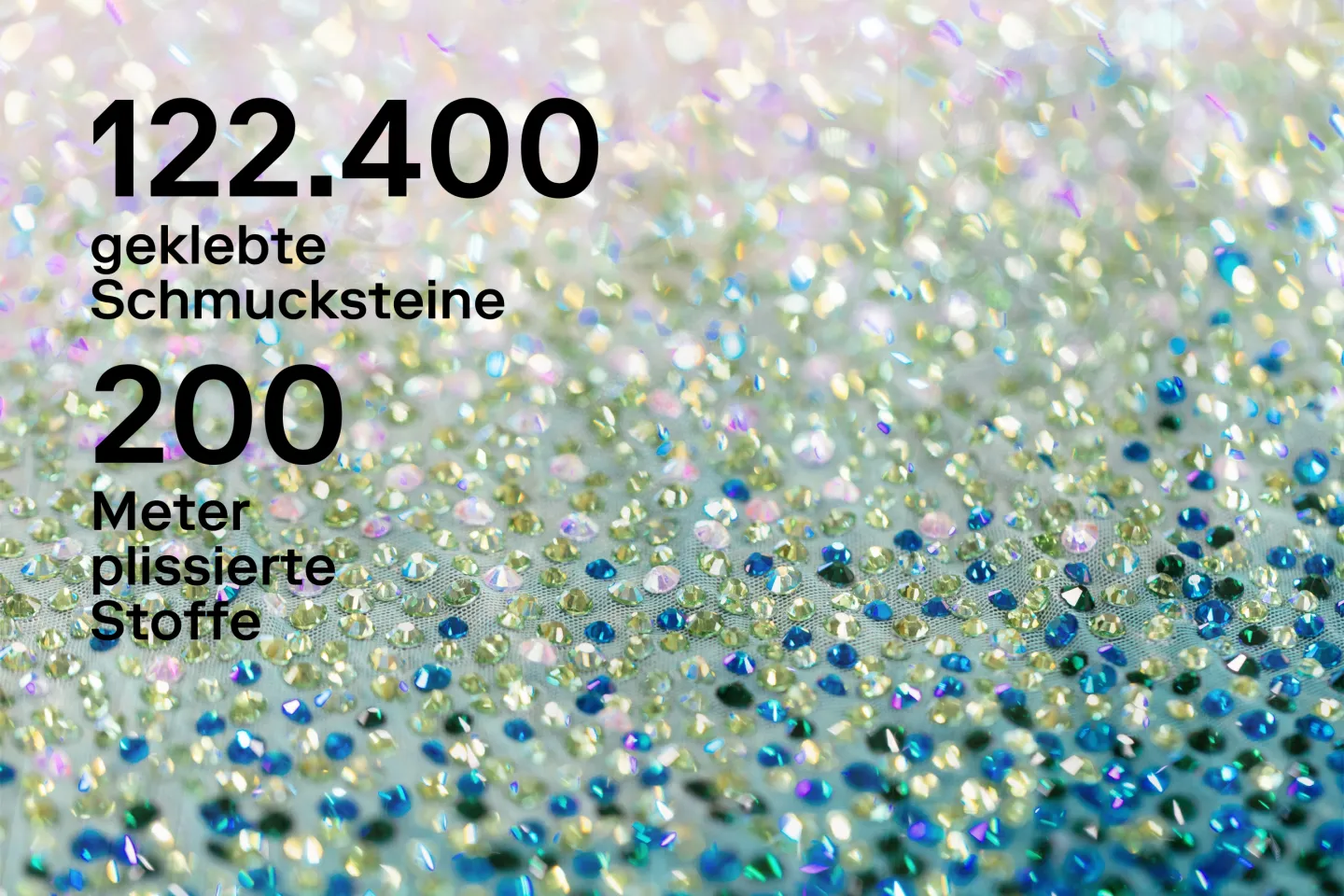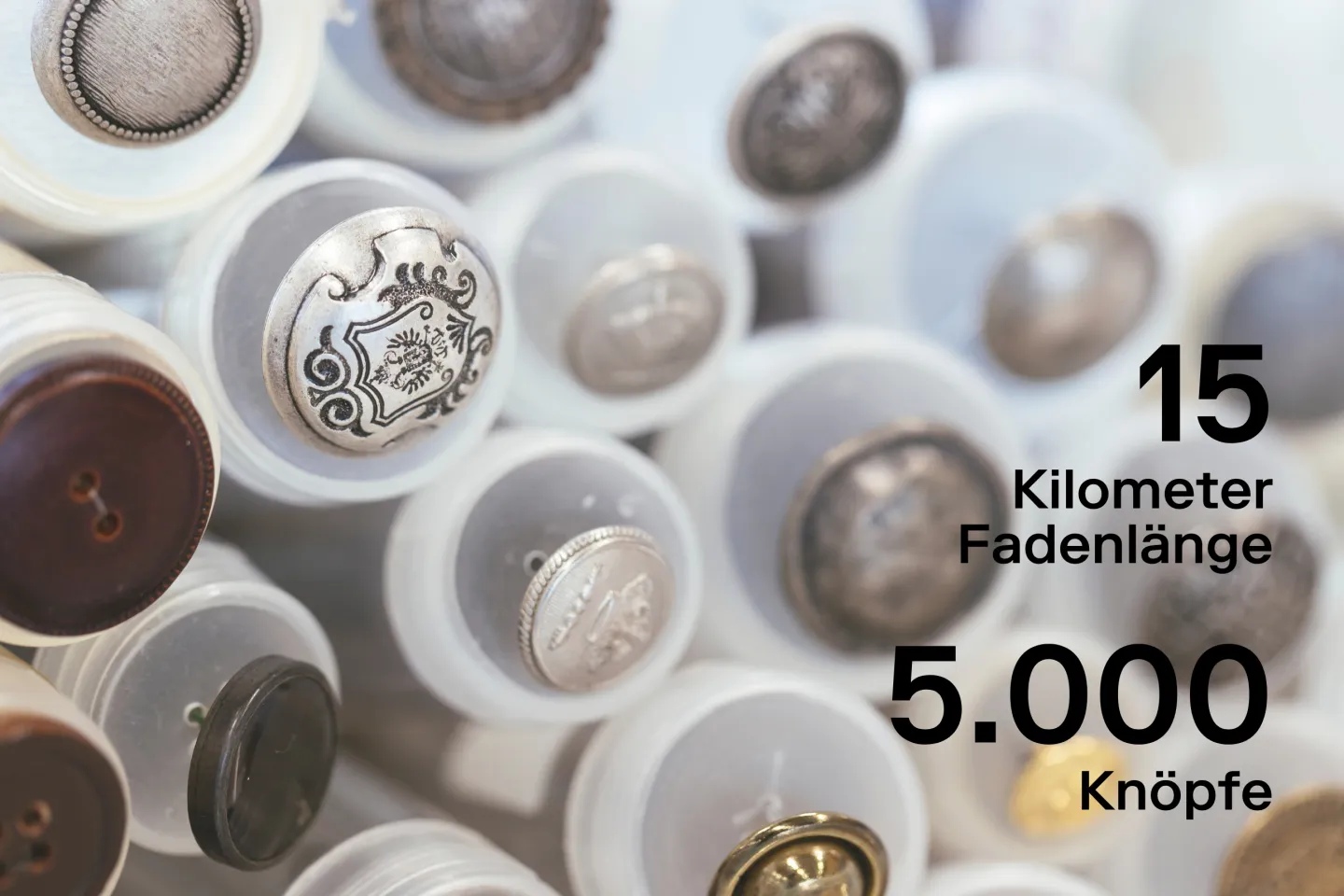Text: Jutta Berger
The text was published in edition 2 (03/25).
Reading time 3 Min.
When fabrics tell stories
In the costume atelier of the Bregenz Festspiele artistic designs are brought to life. Each piece is unique, hand-manufactured with precision and proficiency – from delicate embroideries to clever fastening systems.

Despite the cold temperatures at the Bodensee, Janina Kobinger and her team are already thinking about the summer and Carl Maria von Weber’s Der Freischütz as well as George Enescu’s Œdipe. The costumes for the Opera on the Lake need maintenance and for the Opera at the Festspielhaus as many as 400 costumes need to be produced. Inside the new atelier, that lets in a lot of daylight, the team of the costumes department is busy with cutting, sewing and ironing. The first fittings are coming up soon. “It’s always exciting to find out, if the finished product matches the designer’s ideas and if the costume works on the body,” says costume supervisor Kobinger. Gesine Völlm designed the costumes for Der Freischütz. Tanja Hofmann is responsible for Œdipe.
The demands for cuts and fabrics are diverse. The materials for the Seebühne, in particular, must withstand the occasionally damp weather. Additionally, they must be tailored to serve various purposes. In the winter, ten people work in the atelier, while in the summer, the number of tailors, hat makers, dressers and shoemakers increases five- to sixfold.

On her massive worktable, Janina Kobinger presents noble clothes from Der Freischütz that do not show any signs of how extensively they have been used during the previous festival season: Agathe’s wedding dress and two bodices. They are an example of exceptional craftsmanship. For the dress of poor Agathe, the team used an old technique that is commonly used to make traditional clothing: smocking. The fabric at the waist and arms was folded and gathered and stitched together to create combs. A glass pearl sits on each of these delicate combs. Each pearl was sewn on individually by hand. Janina Kobinger explains the reasons behind this effort: “It’s necessary to avoid a chain reaction of all the pearls falling off when the fabric tears.”
The bodices take even more time and effort to produce than the fabric origami on the wedding dress. A whole week is spent working on one corset. The necessary support is provided by plastic inserts rather than fish bones or metal stays as in the past. They are added into the boning channels and sewn onto the lining. The pointed bodice front makes the waist appear smaller; the armholes remain open, because the sleeves are not stitched on, but “carefully tucked” into the armholes, the costume supervisor explains.

“Lacing” is a very old fastening technique. At a time when zippers and snap fasteners did not exist, people used laces and strings which were tied together. The advantages of this technique are the freedom of movement and the flexibility, says Janina Kobinger. The body is only stitched together, after the first fitting with an additional layer of molton between the lining and the outer fabric to prevent anything from showing through or pricking the delicate silk.
The dressers show mercy when they help putting on the bodice: “We don’t lace them up like in the old days,” Janina Kobinger says and laughs. When women were still forced to wear corsets, their waists were usually reduced by eight centimeters. “We do a maximum of two centimeters,” she reassures us.

In his production, director and stage designer Philipp Stölzl puts the ensemble into the water, an additional challenge for the tailors. The materials must withstand damp, and the actors and actresses should not catch a cold during the festival season. Janina Kobinger thinks back to the cold rehearsal weeks: “Last year, we learned about all the things you can do with neoprene.” For example: neoprene socks for the scenes in the flooded village onstage.
Janina Kobinger’s resume: “Each production teaches us something valuable and broadens our experiences.” What makes her work so special, she says, is the declared standard of quality at the Bregenzer Festspiele. “We get the opportunity to really live our craftsmanship here.”


